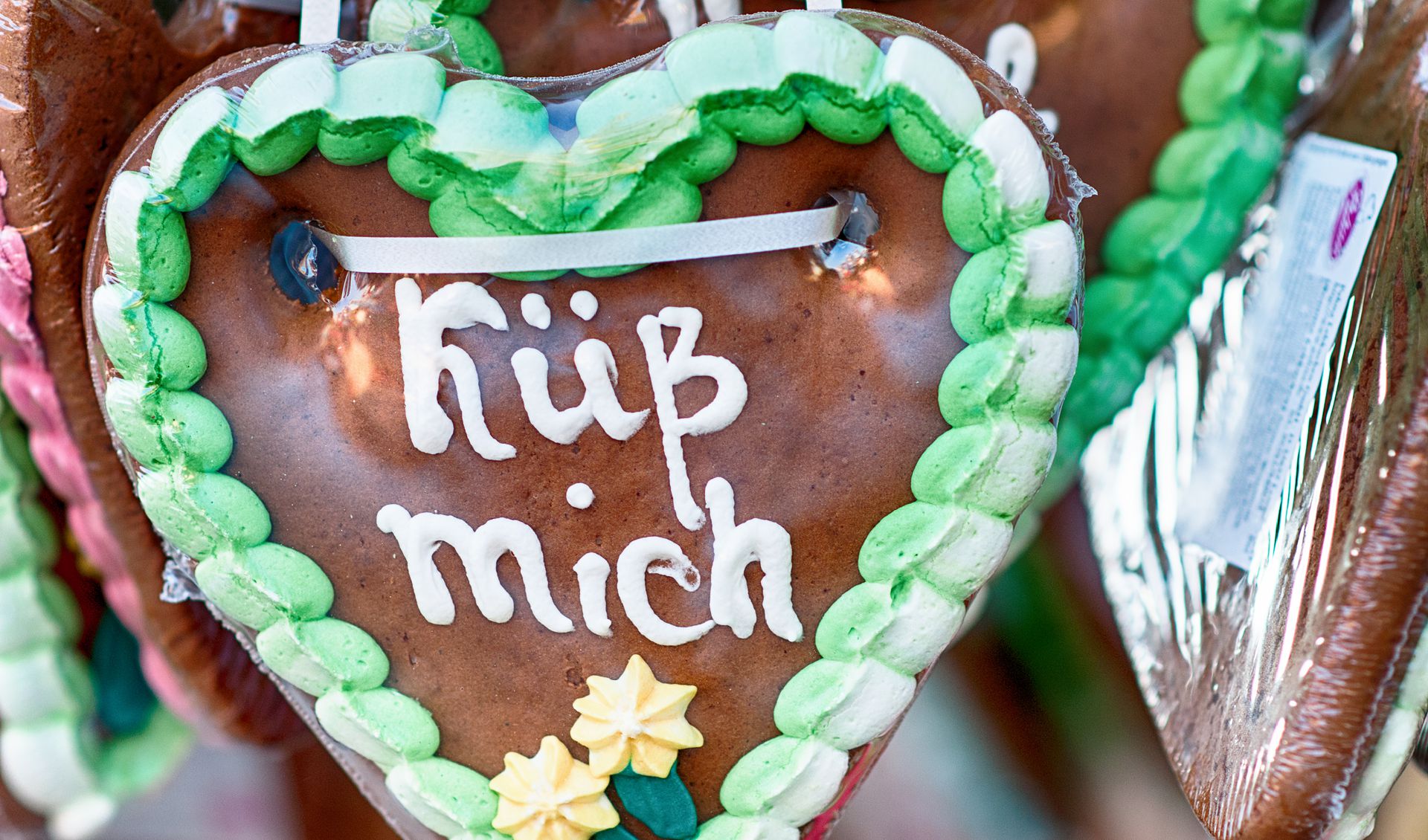German cuisine is renowned: its specialities are familiar even to those without culinary knowledge. The roasted pork leg with sauerkraut, sausages, the thick Eintopf soup and beer are sure to feature in stories about Germany.
But the introduction to German gastronomy will have to be postponed for parents travelling with children. Not only because the beer — fatty, heavy food, typical in all German states — is unsuitable for children's menu. But you don't have to worry about your child going hungry: the Kidpassage overview will help you find out how to organise meals for children on holiday in Germany.
Contents
- Specifics of German national cuisine
- Must-Try Dishes in Germany
- Salads: potatoes as the main ingredient
- Popular German soups
- Meat dishes: from raw minced meat to pork leg
- Fish dishes: the North Sea's riches
- Vegetables and side dishes: not just cabbage
- Traditional German Desserts
- Beverages: beer and lemonade brewed with the same technology
- Christmas specialities in Germany
- Tips for parents and children
- Where to eat: breakfast in a café and lunch in a pub
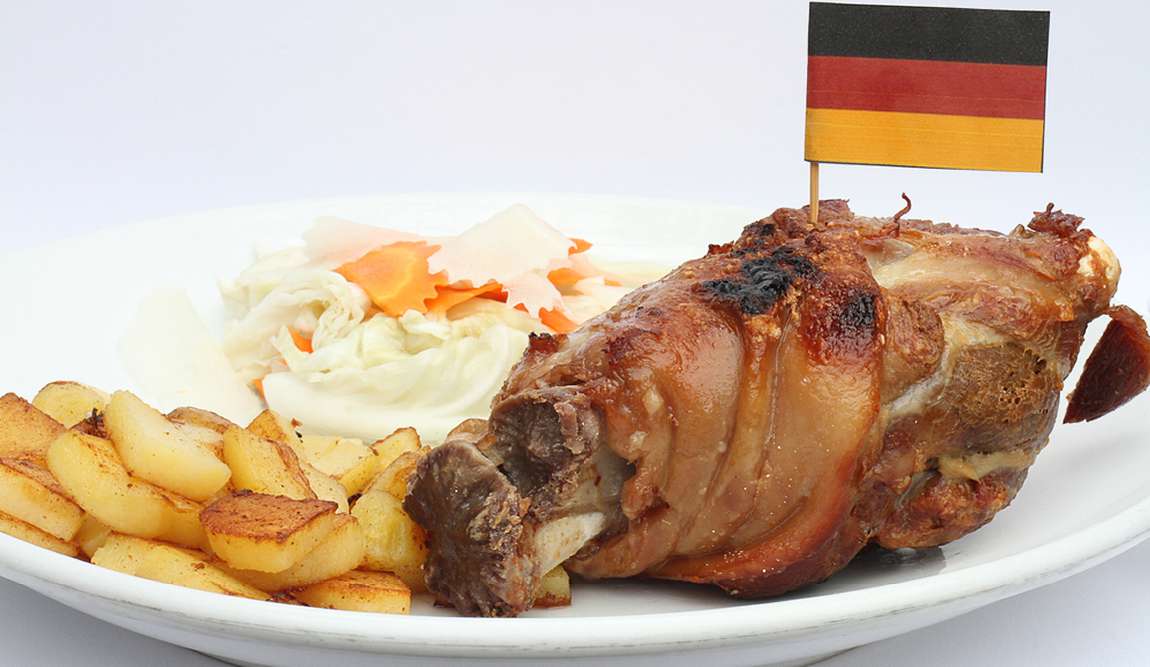
Specifics of German national cuisine
To begin with, Germans love a hearty, substantial meal. The most consumed foods include meat: pork, veal and beef, and poultry (chicken, duck, goose and turkey). The meat is used to make sausages, it is used to make schnitzels, steaks, and even eaten raw.
In the North, fish dishes are every day. The favourite vegetable is potato, almost as good as cabbage, and carrots, parsley, pulses, asparagus, and leeks are also used for soups and side dishes.
The cuisines of Germany's different regions have their specialities, their traditional dishes. Sometimes the origin can be guessed from the name: Frankfurter sausages, Dresden Stollen, Nuremberg gingerbread.
Germans are sure to have cereals on the table, most notably bread. There are several hundred varieties in Germany, including Christmas bread. As for baked goods, it's impossible to count the number of types: pies are baked for both festivals and beer festivals.
Spices have a special place in German cuisine: sausages are unthinkable without many kinds of pepper, mustard, cumin, horseradish, garlic, marjoram and coriander. Christmas cakes have their aromatic mix: ginger, cardamom, anise, cinnamon and nutmeg. Conversely, cereals are not favoured here: you won't usually find buckwheat, millet or rice porridge in restaurants.
Must-Try Dishes in Germany
There are some dishes in Germany that tourists try with particular interest. Everyone has heard about them; everyone expects questions from those back home; everyone is curious: what do Germans find in this food?
Wurst – the famous German sausages are perhaps the most popular dish in Germany.
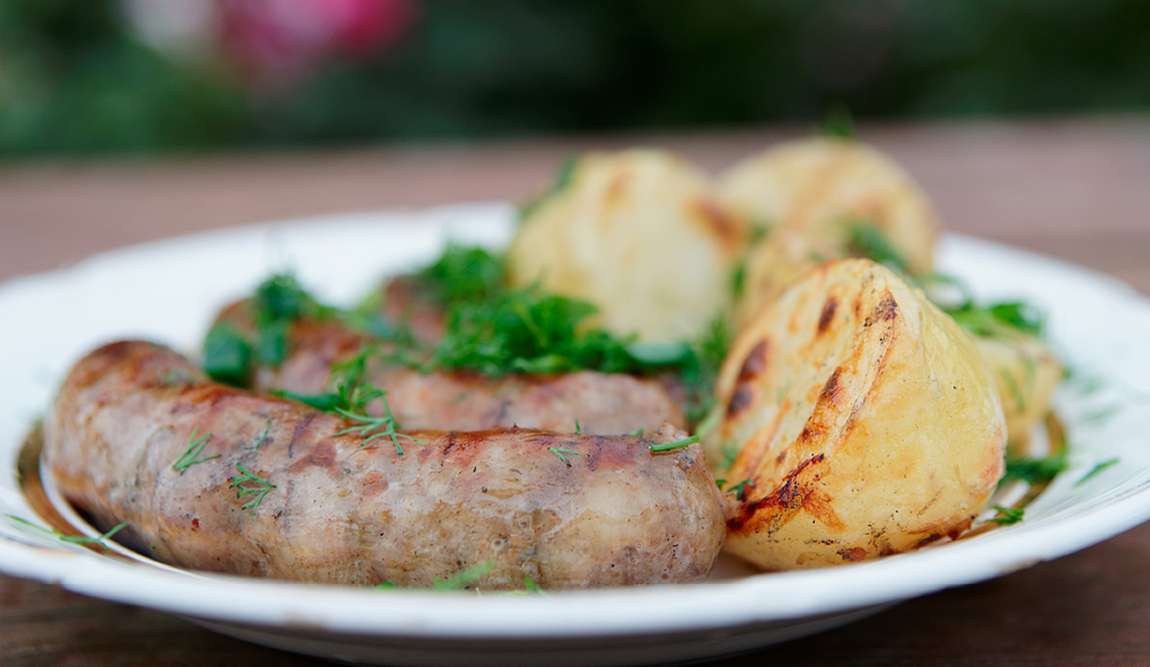
They are eaten at home, in restaurants, in beer gardens and bought from street stalls. Sausages don't look alike, so we recommend trying at least a few varieties:
- Bratwurst – ground pork sausages, which are grilled before serving.
- Frankfurter Rindswurst – smoked beef sausages that can be fried or boiled. The speciality of the sausages is the lack of hot spices.
- Weißwurst – white veal sausages with a touch of pork fat. Boiled weisswurst is the most common treat in Munich.
- Nürnberger Bratwurst – you have to order pork sausages in batches: they're very small. The marjoram gives the sausages a distinctive flavour.
- Currywurst – the spicy minced pork sausages you can smell a mile away. Berliners have a particular fondness for them.
- Blutwurst – traditionally, it is made from the blood of freshly butchered pig, sheep, lamb, cow, or goose.
- Mettwurst – the most exotic kind of sausage. They are neither fried nor boiled but contain raw, slightly smoked pork mince.
- Eisbein – baked pork knuckle. There are many recipes, one of which is a knuckle in beer.
Sauerkraut – a German favourite, suitable for festive meals as well as everyday meals. Sauerkraut is served with pork and sausages.
Salads: potatoes as the main ingredient
A German salad is often a complete meal for a child. Here, another characteristic of German cuisine comes into play: potatoes are an indispensable ingredient in salads. Pickled cucumber, apple, chicken breast, celery stalks, boiled egg, bacon and herring can be added.
Kartofelsalat – is a potato salad with various toppings. It is dressed with vegetable oil, mayonnaise and, for the sake of a healthy lifestyle, yoghurt.
Gurkensalat (Cucumber Salad) – cucumber is sliced thinly for this salad, then drowned in Saur sahne (sour cream) or quark, vinegar, and fresh dill.

Rote Bete-Salat mit Hering – it is a vegetable salad with herring, similar to the herring under a fur coat we are used to.
Fleischsalat is a meat salad with a minimum of ingredients: sausage, pickle and mayonnaise. This salad is often served on a piece of bread. Offer your child an unusual type of bread with the salad – potato, carrot, pumpkin seeds or any other kind.
Popular German soups
Germany greatly respects soup and has even opened a soup museum in Neudorf. What do German restaurants usually serve?
- Eintopf – A thick soup of vegetables, pulses, meat and smoked meat, similar to a meat soup. Cereals or pasta are added to make the soup thicker. Eintopf is so filling that you won't need anything else for dinner.
- Kartoffelsuppe – mashed potato soup. A variation on this soup with sauerkraut and bacon could be a surprise.
- Knödelsuppe, or Leberknödelsuppe – gnocchi soup. It should be noted that gnocchi are not made from dough but meat in Germany.
- Fischsuppe – fish soup.
- Zwiebelsuppe – onion soup.
- Gemüsesuppe – light vegetable soup.
- Fleischbrühe – meat broth. It is usually served with a large meat or liver dumpling, but the broth can be topped with noodles or potatoes.

Cream coup is a traditional soup served in Germany. Its main ingredients can be cauliflower, pumpkin, tomatoes and other vegetables.
Meat dishes: from raw minced meat to pork leg
As with other meat dishes, it is worth experimenting with, ordering something for yourself and offering your child some of the new food. There are meat dishes in Germany that children simply adore.
- Maultaschen – are like large dumplings stuffed with pork and spinach. The moultaschen are boiled and sometimes fried afterwards.
- Klopse, or Königsberger Klopse – boiled ground beef and pork meatballs. The white sauce adds a touch of sophistication to the simple dish.
- Gaisburger Marsch – a traditional Swabian dish, beef stew with potatoes and pasta.
- Kotelett – is not a minced meat cutlet, as the name might suggest, but a chop.
- Zwiebelrostbraten – veal roast beef with onions.
- Leberkäse – baked minced beef and pork pâté. In Bavaria, it is considered a good snack with beer, but this pâté on a slice of bread would make an excellent snack for a child.
- Dampfnudeln – simple steamed cutlets.
Germany has its counterpart to pizza – Flammkuchen, or 'fire pie'. A thin layer of dough is covered with bacon, onions and cream cheese and then baked over an open fire (hence the name). The traditional Flammkuchen recipe has been expanded to include ham, chicken and other ingredients in the filling.
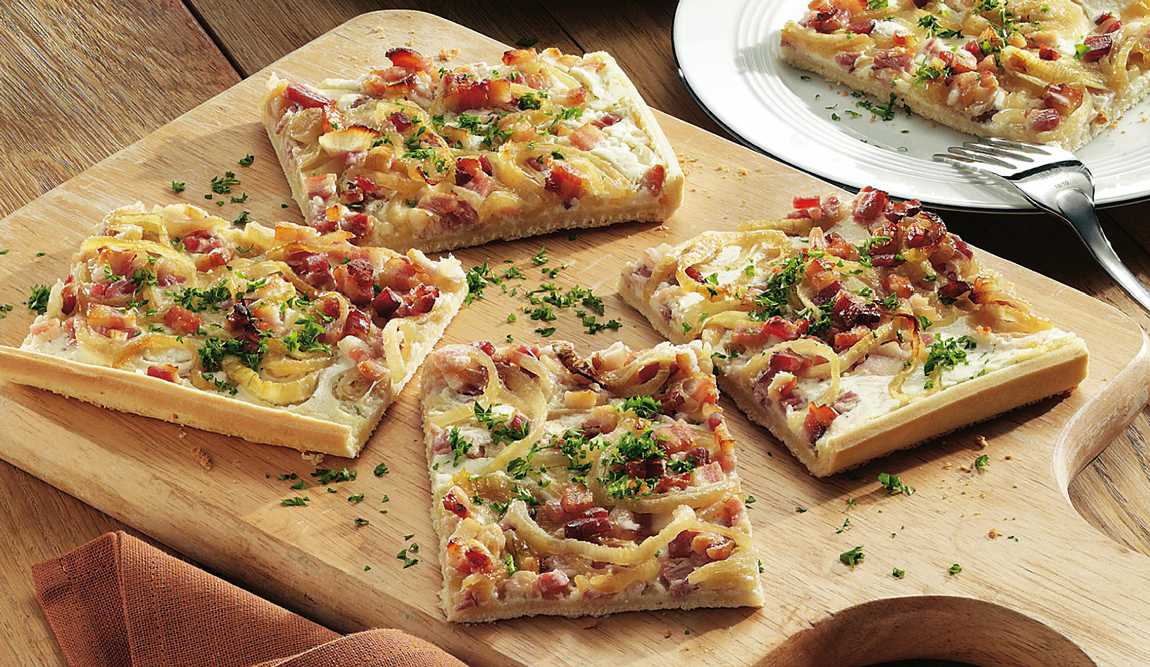
Some fatty and heavy meat dishes should probably not be offered to children. But adults are advised to try them out.
- Schweinshaxe – roast pork leg is one of Germany's national dishes. The meat is cooked in the oven, grilled or on a spit and served with cabbage or mashed peas. Seasonings, especially garlic, thyme and rosemary, give the dish a unique flavour.
- Gefüllter Saumagen – stuffed pork belly. The classic stuffing consists of lean pork and potatoes, so the dish would be relatively dietary if not for many spices, especially black pepper. The stuffed stomach is simmered for several hours over low heat.
- Birnen, Bohnen und Speck – "pears, beans and bacon": the whole recipe fits the title. Only the potatoes traditionally served with this dish as a side dish are not mentioned. This national dish is made in northern Germany.
- Hackepeter (Mett, Mett-Brötchen, Mettgut) – raw minced meat with salt, black pepper and onion is spread on bread. It is rarely served in restaurants but is a frequent snack in beer gardens. It is also sold in supermarkets.
Fish dishes: the North Sea's riches
In northern Germany, fish and seafood are eaten as often as meat. The fish is not fancy: fried hake or cod with the invariable potato side dish. Fish is also available for Christmas festive occasions: roast or baked carp.
- Pannfisch – a stew of several varieties of fish. It was once a way of using fish trimmings, but now panfish is considered almost a delicacy.
- Gebratene Heringe – fried herring. This dish is trendy in Hamburg.
- Rollmops – pickled herring rolls.
- Nordseekrabben – North Sea crabs.
Vegetables and side dishes: not just cabbage
Vegetables are loved and eaten frequently in Germany. They are boiled, stewed and baked, sometimes with pasta or sausages. Vegetable side dishes are even more popular than porridge or pasta.
Leipziger Allerlei – "Leipzig stuffing", one of Germany's traditional dishes. The vegetables (carrots, green peas, cauliflower, asparagus) are roasted and then drizzled with crayfish shell sauce before serving.
Hoppelpoppel – roast potatoes with sausages and eggs. Children who are partial to pancakes will have more favourites.
Kartofelpuffer – ruddy potato pancakes.
Kartoffel Möhren Pfanne – potato and carrot pancakes.
Children love another German dish: Eier im Nest (Eggs in the Nest). Eier im Nest is a glazed egg cooked on potatoes and herbs. The dish is cooked in the oven.
Porridge is not particularly popular in Germany. Rice is sometimes on the menu, but mashed potatoes, boiled potatoes, pasta, and sauerkraut.
Schupfnudeln – potato noodles. The potato dough sticks are fried until crispy and served with meat.
Kässpätzle is a dish of handmade pasta. Boiled pasta is topped with cheese and fried onions and baked.
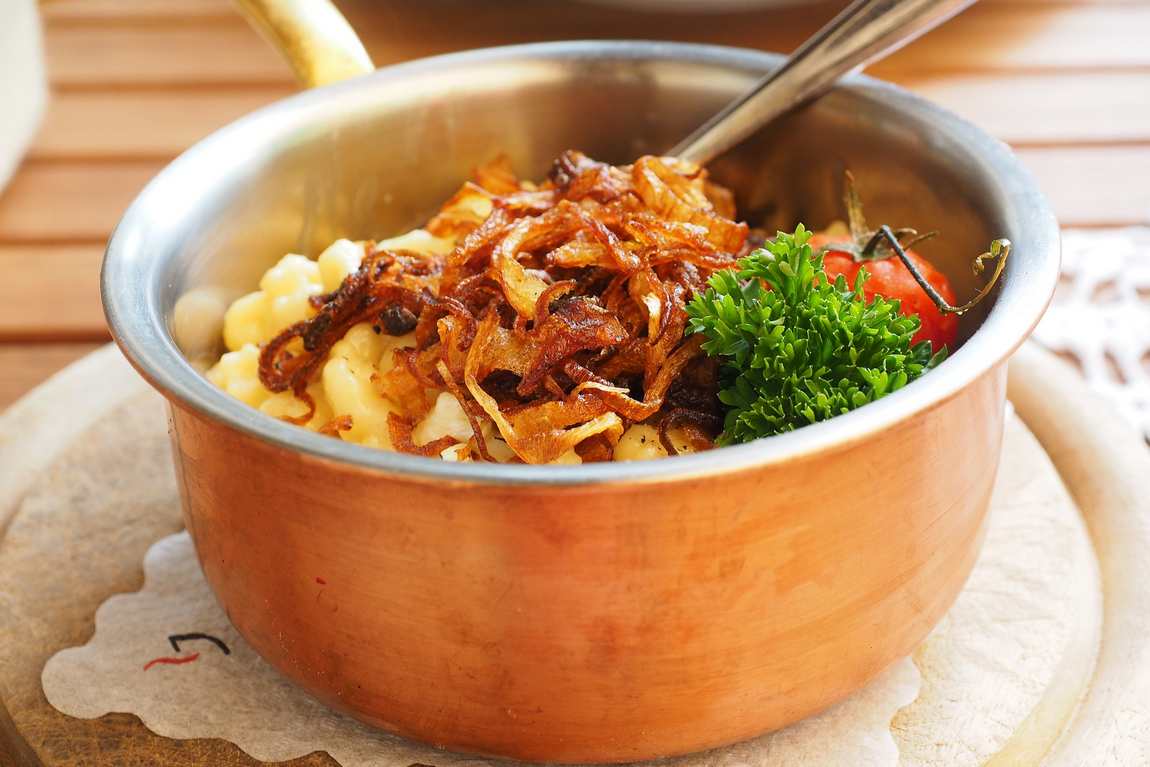
Traditional German Desserts
Whoever is lucky enough to travel to Germany is a sweet tooth. Each federal state has its sweets, with special treats baked for Christmas and Easter.
Berliner – doughnuts filled with cream or marmalade. The demand for this dessert increases on New Year's Eve and during the spring carnival. Beware on carnival days: doughnuts may contain mustard instead of sweet filling.
Rohrnudeln – Bavarian doughnut buns with a fruit filling. The pastry shop's rornudeln are dipped in vanilla cream: it's even tastier. Frankfurter Kranz – 'Frankfurter Wreath', a multi-storey cake made of sponge cake with buttercream. Another translation of the word Kranz is 'crown', which this dessert stands for.
Prinzregententorte – the famous Bavarian dessert is named after the Prince Regent of Bavaria, Luitpold. This cake of thin crusts smeared with chocolate cream impresses even without any knowledge of history.
Rote grütze – a dessert of berry kissels drizzled with whipped cream. In translation, the name means 'red porridge'. Brezel is a versatile twisted loaf that can be eaten with sausages and fruit desserts. Streusel is a streusel. This pastry is similar to the famous grated cake with a curd-fruit filling.
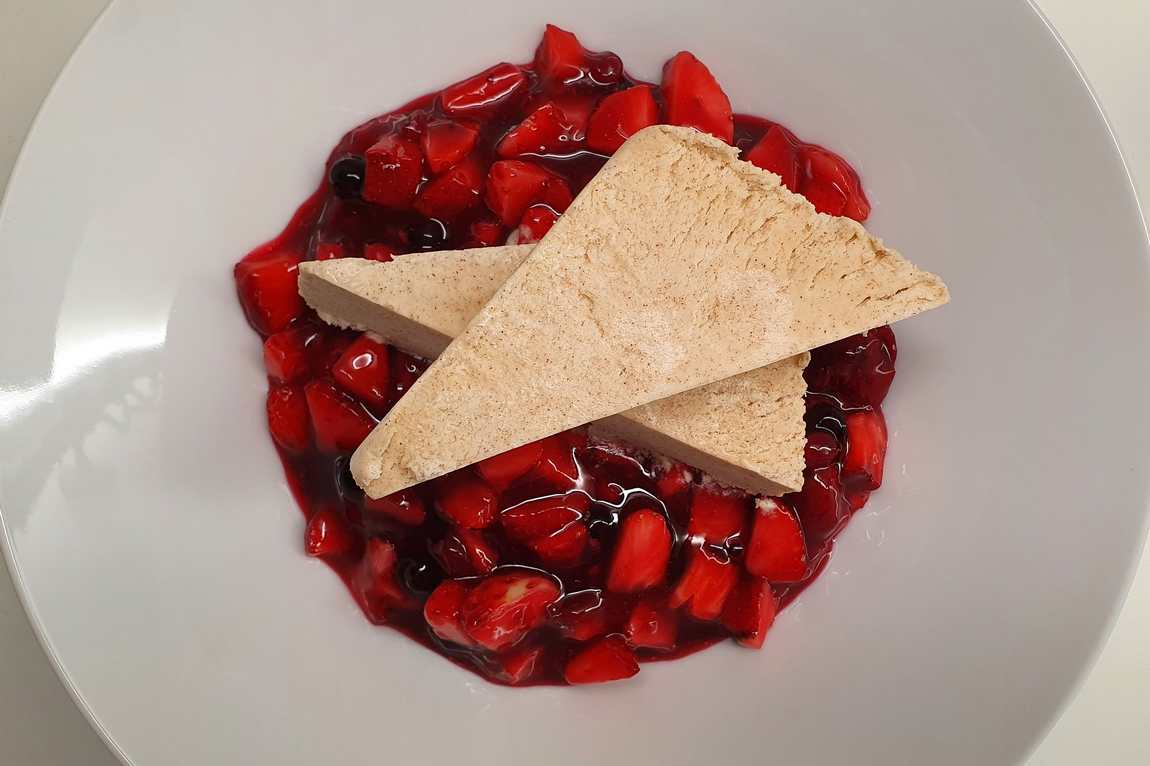
Pfankuchen – thin pancakes often served with jam or marmalade. In Cologne, Reibekuchen potato pancakes are considered dessert. They are usually accompanied by sweet and sour apple puree.
Gugelhupf –it is a cake traditionally made with a soft yeast dough, baked in a high, creased, toroidal pan.
Кaiserschmarrn – a sweet omelette native to Austria, which Germans have eagerly added to their list of favourites. To make the Kaiserschmarrn, the eggs are beaten with milk, flour, cinnamon and raisins. The omelette is served with a sprinkling of icing sugar.
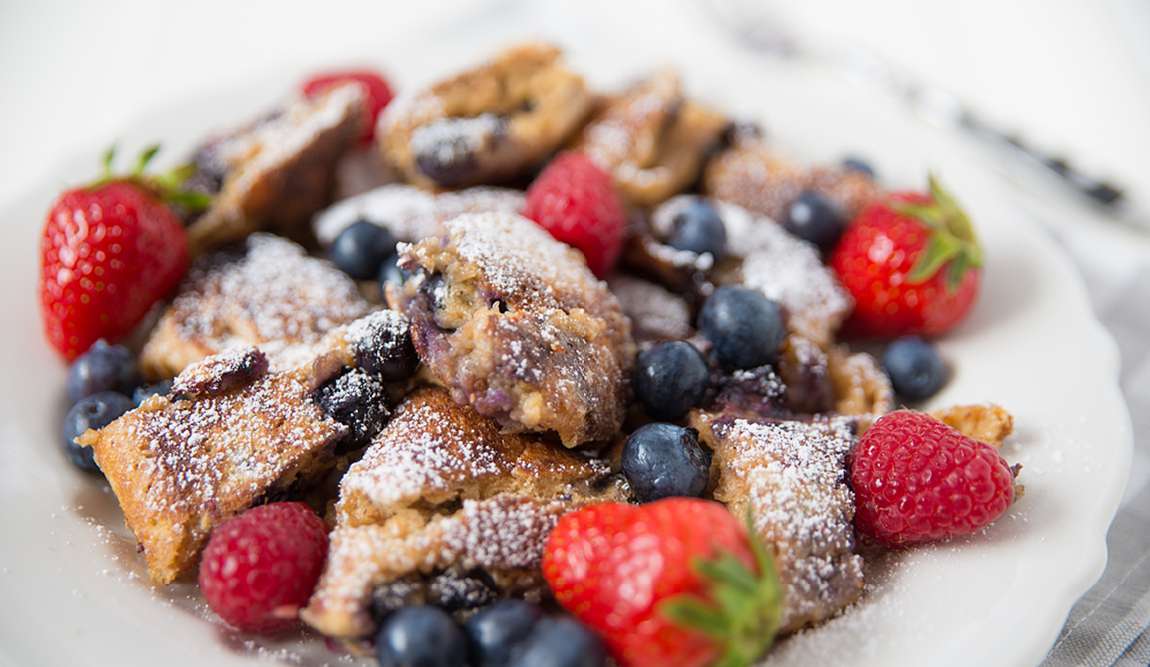
Beverages: beer and lemonade brewed with the same technology
Germany's most famous drink is beer. It is drunk from neat, thin-walled glasses or heavy-litre cups, but most importantly, it is savoured and enjoyed. It is impossible to list all the varieties; let us mention just a few popular ones: Pilsner, Weissbier, Altbier (Dusseldorf ale), Kölsch (Cologne beer), Schwarzbier, Dunkelbier and Rauchbier. German wines are also worth checking out. Mosel, Pfalz and Rheingesen wines are excellent.
When choosing a wine, please pay attention to its classification. Quality wines are labelled Qualitätswein bestimmter Anbaugebiete (QbA) or Prädikatswein.
Eiswein – "ice wine", which occupies a special place in the classification. This dessert wine is made from grapes frozen on the vine.
Sweet cakes and pastries can accompany Schwarztee black tea or herbal teas (chamomile Kamillentee, mint Pfefferminztee). Germans themselves prefer to drink coffee in the morning.
Apfelschorle – the highlight of German cuisine, apple juice half-and-half with mineral water.
Also interesting to try is the Bionade carbonated drink, which has won the love of Germans. It's an non-alcoholic, organic fermented and carbonated beverage, a kind of lemonade with five different flavours. Interestingly, Bionad is made using brewing techniques.
New Year and Christmas dishes
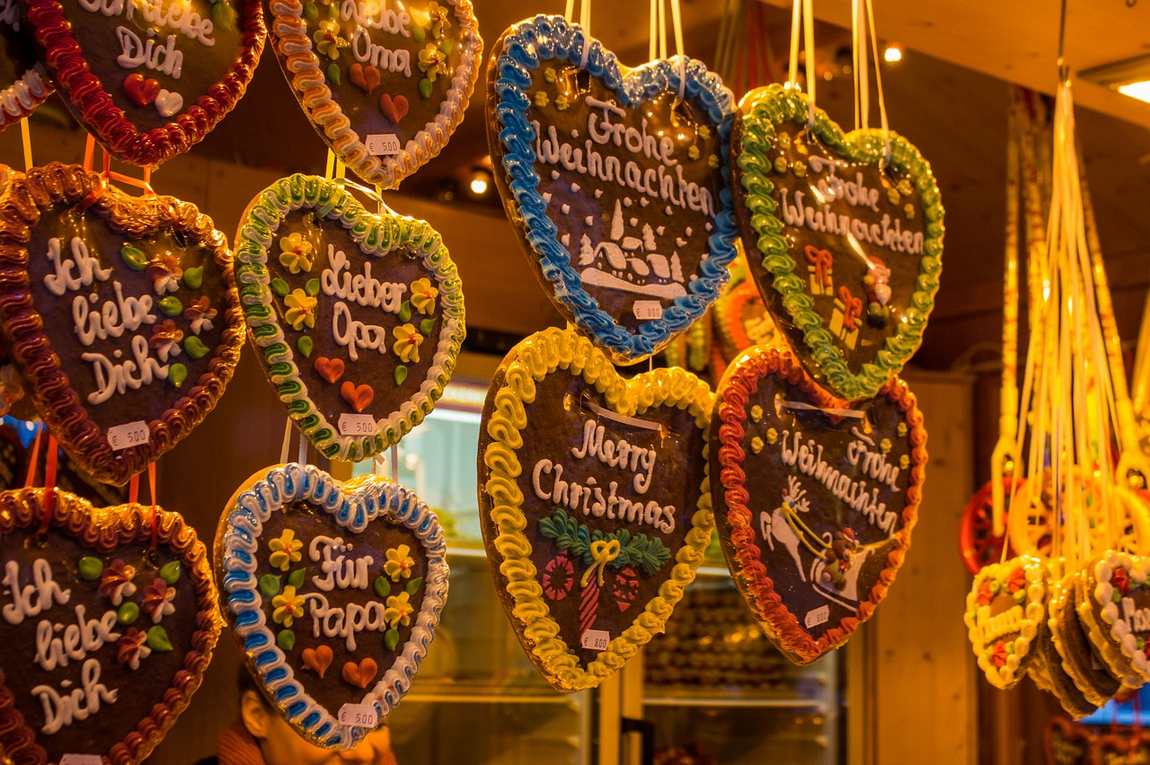
The Christmas table in Germany is traditionally lavish. Food is prepared according to one's taste, but some dishes must be on the table.
Knusprige Gans – roast goose with a crisp, crispy crust, the main dish on the festive table. Recipes abound: it is stuffed with prunes and apples, marinated in wine, served with dumplings, etc.
Festtagskarpfen – baked carp, one of Germany's traditional Christmas dishes.
Christstollen – Christmas cake with nuts, candied fruit, sultanas and lemon zest. It is more commonly referred to simply as Stollen. The filling is the same as the batter, so the cake is unimaginably delicious. Stollen has many varieties: cottage cheese, buttercream, marzipan and poppy seed. The most famous in Germany is the Dresdner Christstollen. Dresdner Christstollen is baked only by hand.
Advent brot – Christmas bread. It resembles Stollen, but with less sugar, butter and stuffing and instead with cloves, black pepper, coriander, nutmeg and other spicy herbs added to the dough.
Lebkuchen, or Plätzchen – Gingerbread, which is baked in every home and sold at fairs. In addition to the usual gingerbread, Nürnberger Lebkuchen (also known as Elisenlebkuchen) — gingerbread with nuts and candied fruit, Aachener Printen — rectangular honey spice with whole almonds, Frankfurter Brenten — marzipan dough gingerbread.
Baumkuchen – a Christmas cake that originated in German cuisine 350 years ago. Baum means 'tree' in German, and the cake resembles a sawn tree in the cut. It has to do with the baking method: a roll is coated in liquid batter and placed over a fire, and then the procedure is repeated several times until a multi-layered, crispy tube is formed.
Zimtsterne – a special kind of cinnamon star-shaped biscuit, an unmissable Christmas and New Year's Eve dish.
Vanilkipferl – crescent-shaped shortbread biscuits. Germans try to add natural vanilla to the dough to make the biscuits fragrant.
Schneeballen – "Snowballs" made from the kind of shortbread dough for which Franconia is famous (the magical town of Rothenburg am Tauber is located there). The dough balls are sprinkled with icing sugar, making them even more reminiscent of real snowballs.
Glühwein – warm red wine with spices. Glüwein is always sold at fairs and is often spiked with spirits (cognac or herbal balsam).
Tips for parents and children
Since the main feature of German cuisine is an abundance of fatty and heavy food, you must be careful when choosing food for children in restaurants. The younger the child, the more difficult it is to choose a dish for him or her. We recommend the Fleischbrühe meat broth, Knödelsuppe and Gemüsesuppe vegetable soup. You can have meatballs Klopse or steam cutlets Dampfnudeln for the main course.
A side dish can be boiled or mashed potato, pasta, or stewed vegetables. If your child doesn't want meat, treat him or her to Kartofelpuffer and Kartoffel Möhren Pfanne, Schupfnudeln potato noodles or Kässpätzle pasta casserole.
Food in Germany is usually not very spicy, but to avoid spices altogether, ask for a dish, "nicht scharf" — not spicy.
An older child can try almost any dish in Germany that will interest him or her. If you are trying to keep your child away from smoked foods, do not offer Frankfurter Rindswurst sausages, Eintopf soup or dishes with bacon (it can be in potato salad, potato soup or flammkuchen).
It has to be said that Germany pays more and more attention to healthy lifestyles and food. For this reason, traditional German cuisine is transforming and is sometimes overtaken by low-calorie, easy-to-digest dishes. This can be frustrating for foodies, but it's suitable for tourists with children: they don't have to search for a restaurant with a proper meal for the child.
Where to eat: breakfast in a café and lunch in a pub
.jpg)
You don't have to look for a restaurant serving national dishes in Germany. Plenty of restaurants and pubs in and away from the tourist spots serve authentic pork leg with sauerkraut, zwiebelrostbraten and 'eggs in the nest'. The only difference is the price. By the way, you can even eat at the beer gardens with kids. You can get a good meal at Gaststätte and Biergarten. Kper and Bierhaus, on the other hand, don't serve food but beer snacks.
Good news for early risers: German cafés open at 7–8 am, offering a traditional breakfast of eggs, sandwiches and coffee. Restaurants open later in the day but provide a hearty lunch. In the evening, restaurants stay open until 10 pm or 11 pm.
You can eat sausages on the go. You'll get a plate of weisswurst with sweet mustard, ketchup-laden bratwurst in a bun or currywurst in a spicy sauce at street kiosks.
A popular snack on the go is Drei im Weggla, which means three sausages in a bun. Similarly, kiosks sell brezels: although they taste brackish, you don't have to wash them down with beer. And then there's the fast food fish restaurant Nordsee in Germany, which serves fish and seafood.
Our review would not be complete without mentioning that in some German federal states, there is a tradition of visiting a restaurant as a family on Sundays.
Germans even wear their national costumes to go out. And if getting to know some of the local specialities has to be put off for a while, there is nothing to stop you from seeing how the Bavarians and Hessians revere their cuisine. Their meals are preceded by "Guten Appetit!" — "Bon appetit!"
Travelling around Germany can be just as delicious as the national German cuisine. If you haven't decided which city you want to visit with your child, you can find a list of cities in Germany on the Kidpassage website. Information on children's activities and family-friendly hotels can help you enjoy your holiday to the full.



